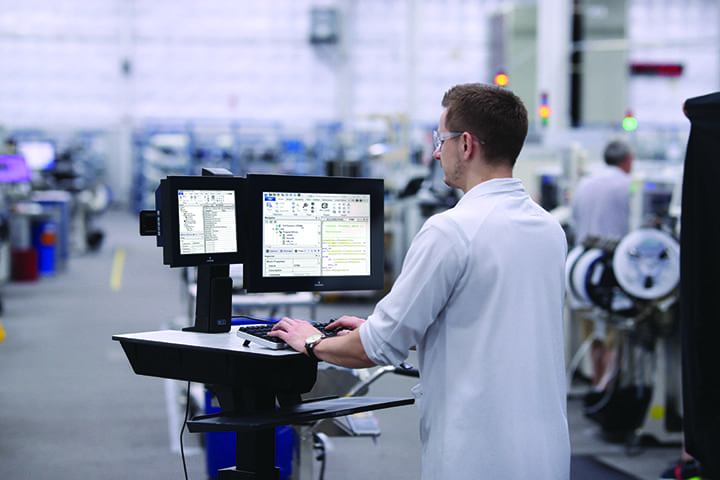
Why Companies Need Staff Automation Now
In today’s fast-paced business environment, companies face increasing pressure to improve efficiency, enhance productivity, and reduce operational costs. One effective solution that has gained significant traction is staff automation. By automating routine tasks and workflows, organizations can empower their employees to focus on higher-value activities, ultimately driving growth and innovation. This article explores the reasons why companies need staff automation now more than ever.
1. Increasing Operational Efficiency
One of the primary benefits of staff automation is the significant increase in operational efficiency. Many businesses still rely on manual processes for tasks such as data entry, reporting, and scheduling. These repetitive tasks consume valuable time and resources. By implementing automation tools, companies can streamline these processes, allowing employees to redirect their efforts toward more strategic initiatives.
Example:
For instance, automating data entry using tools like WorkForce Sync can drastically reduce the time spent on this task, enabling staff to focus on analysis and decision-making.
2. Enhancing Accuracy and Reducing Errors
Error is an inevitable part of manual processes. Mistakes in data entry, calculations, or scheduling can lead to costly consequences. Staff automation helps eliminate these errors by ensuring that tasks are performed consistently and accurately.
Example:
In finance, automating invoicing and payroll processes can minimize errors, ensuring timely payments and accurate financial reporting. This not only improves compliance but also builds trust with employees and clients.
3. Improving Employee Morale and Satisfaction
Repetitive tasks can lead to employee burnout and dissatisfaction. When employees spend most of their time on mundane activities, their motivation and engagement can decline. Staff automation alleviates this burden by allowing employees to focus on more meaningful and rewarding tasks.
Example:
By automating routine HR processes, such as onboarding and benefits administration, organizations can create a more engaging work environment. Employees can spend more time on strategic projects, leading to higher job satisfaction.
4. Facilitating Remote Work
In the wake of the COVID-19 pandemic, remote work has become a new norm for many companies. Staff automation tools are essential for facilitating collaboration and communication among remote teams. Automated workflows ensure that tasks are completed on time and that everyone is aligned, regardless of their physical location.
Example:
Using project management tools like Asana or Trello, teams can automate task assignments and status updates, keeping everyone informed and engaged without the need for constant check-ins.
5. Enabling Scalability
As businesses grow, scaling operations becomes increasingly challenging. Staff automation provides the flexibility needed to handle increased workloads without the proportional increase in staffing costs. By automating processes, companies can efficiently manage larger volumes of work.
Example:
A growing e-commerce business can automate inventory management and order processing, allowing it to scale operations during peak seasons without compromising service quality.
6. Supporting Data-Driven Decision Making
In an age where data is abundant, companies must leverage analytics to make informed decisions. Staff automation tools often come with built-in analytics capabilities, providing real-time insights into business operations.
Example:
Sales automation tools, such as HubSpot, can analyze customer interactions and sales data, helping teams identify trends and opportunities for improvement. This empowers decision-makers to act swiftly based on data-driven insights.
7. Reducing Operational Costs
Implementing staff automation can lead to significant cost savings. By streamlining processes and reducing the time spent on manual tasks, companies can lower operational expenses. Additionally, automation minimizes the risk of errors, which can result in costly rectifications.
Example:
A company that automates its payroll processing can save on administrative costs while ensuring that employees are paid accurately and on time.
8. Enhancing Customer Experience
In today’s competitive market, providing an exceptional customer experience is critical for success. Staff automation can help improve customer interactions by ensuring timely responses and accurate information.
Example:
Using chatbots for customer service inquiries allows businesses to provide immediate assistance, improving customer satisfaction and loyalty. Automation ensures that customers receive prompt responses, even during peak times.
9. Fostering Innovation
When employees are freed from mundane tasks through staff automation, they can focus on innovation and creative problem-solving. This shift in focus can lead to the development of new ideas, products, and services that drive business growth.
Example:
Companies that automate routine processes often find that their employees have more time to brainstorm and collaborate on innovative projects, ultimately leading to a competitive advantage.
10. Preparing for the Future
As technology continues to evolve, businesses must adapt to stay relevant. Investing in staff automation now positions companies to take advantage of future advancements. Automation is not just a trend; it is becoming a fundamental aspect of how businesses operate.
Example:
By adopting automation tools early, companies can better prepare for future challenges and opportunities, ensuring they remain agile and competitive in an ever-changing landscape.
Conclusion
In conclusion, the need for staff automation in today’s business environment is more critical than ever. From increasing operational efficiency and enhancing accuracy to improving employee morale and fostering innovation, the benefits of automation are profound. As companies navigate the complexities of growth and change, embracing staff automation will be essential for driving productivity and achieving long-term success.





